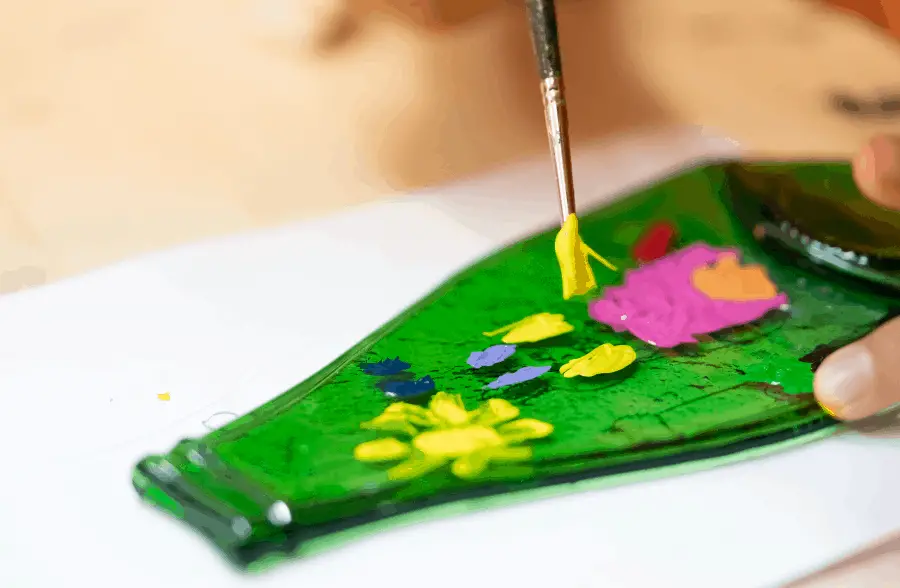Gouache paint seems like a great option for painting on glass due to its semi-translucent consistency and vibrant colors. It is an easy to use medium that can be used on plenty of surfaces, like wood, plastic, and even fabric.
But, can you use gouache paint on glass? Yes! You can definitely use gouache paint on glass, and that includes windows, wine glasses, home decor and even fishbowls. You will need to prime your surface though, before applying the paint.
If you are going to paint on a window, make sure you paint on the inside. If you are going to paint a glass or a fishbowl, make sure you paint on the outside. No matter what you are painting on, there is a glass primer that you should use first. This will enhance the adhesion of the paint to the glass. In this article, we go over everything you need to know for using gouache paint on glass. Let’s read on!
Priming Your Glass Surface
Before you can apply any paint, you will need to prime the glass surface. This ensures that the paint adheres to the surface, as well as protects your paint. Priming is always an important step in any paint project, especially when some surfaces are a bit difficult to paint on.
I always use Mont Marte Premium Primer for all my painting projects, because it not only works for gouache paint, but also acrylics and oil paints. I always think it’s greta to have one primer that you can trust to work well with your paints.

Does Gouache Paint Wash Off Glass?
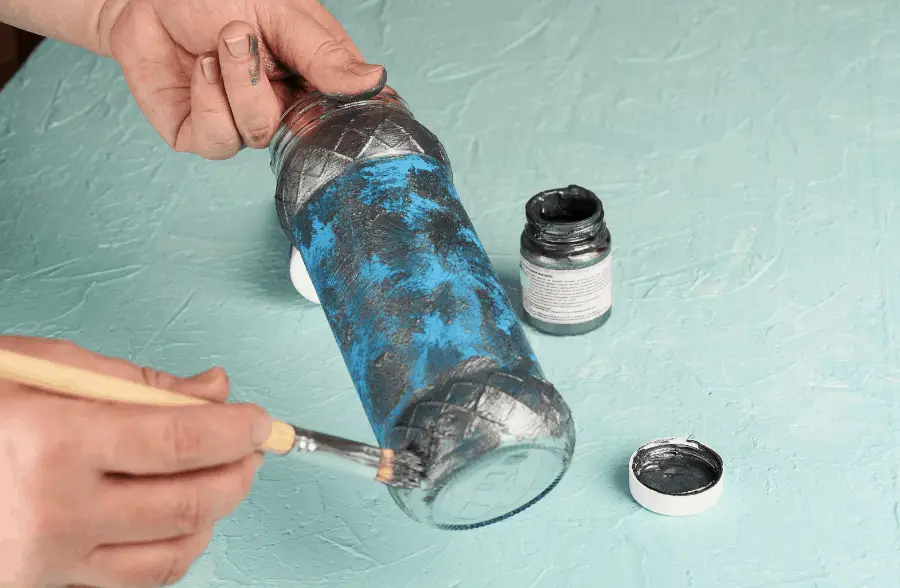
Gouache is a water-based paint that can be reactivated if it gets wet. That means if you aren’t careful with your gouache glass painting, it can be rinsed off. This makes it easy to change your design if you want, but it also makes it difficult to keep the design on for a long time.
My favorite and top pick is always Arteza Gouache Paints. They have so many different colors, and the quality is amazing! I usually use Arteza Paints for all my projects.

What I love about gouache paint, is that it can easily be removed from any surface, especially glass. All it takes is some water and a cloth or sponge to take it off. Use cool water for the best removal. Start to blot the paint on the window with the wet cloth or sponge.
Start at the edge of the painting and work your way in towards the center. It might take some time for the paint to fully reactivate and lift from the glass. Be sure to rinse out the cloth or sponge every so often to get rid of the lifted color. Ring it out after, so it is not dripping yet.
If you do not want the gouache paint to come off for a while, there are ways to protect the paint. You can seal your painting to adhere it to the surface of the glass. This is beneficial for surfaces like a glass cup or fishbowl. Later on in the article we go over how to seal gouache paint on glass.
Does Gouache Fade in Sunlight?
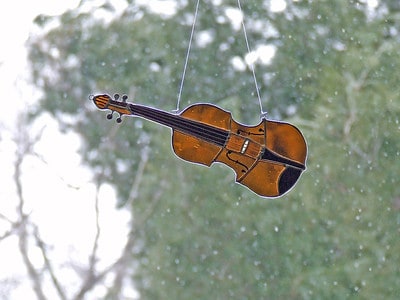
Fading is something that is bound to happen to any kind of paint when exposed to an excessive amount of sunlight. Some pigments are going to fade faster than others, and some pigments will last way longer. On most gouache paint tubes, you will see a lightfast rating. This will tell you how likely the paint is to fade in the sunlight.
Gouache colors with a rating of AA or A are not likely to fade. These paints will have the most permanent pigments. Colors with an AA or A rating are usually those like bright yellow or sky blue. They are light and bright, and expected to remain the same color forever, even with sunlight exposure.

Gouache colors that have a rating of B or C are likely to fade over a period of about 10 years. That means they will slowly start to fade. Colors with these ratings are usually those like light purple and violet. The changes will be subtle but will result in big changes over time whether exposed to sunlight or not.
There might also be some gouache colors with a fugitive or C lightfast rating. These colors are not expected to stand up well to the sun and should be kept away from direct sunlight. You will be lucky if these colors last a few months before fading.
Can I Bake Gouache Paint in the Oven?
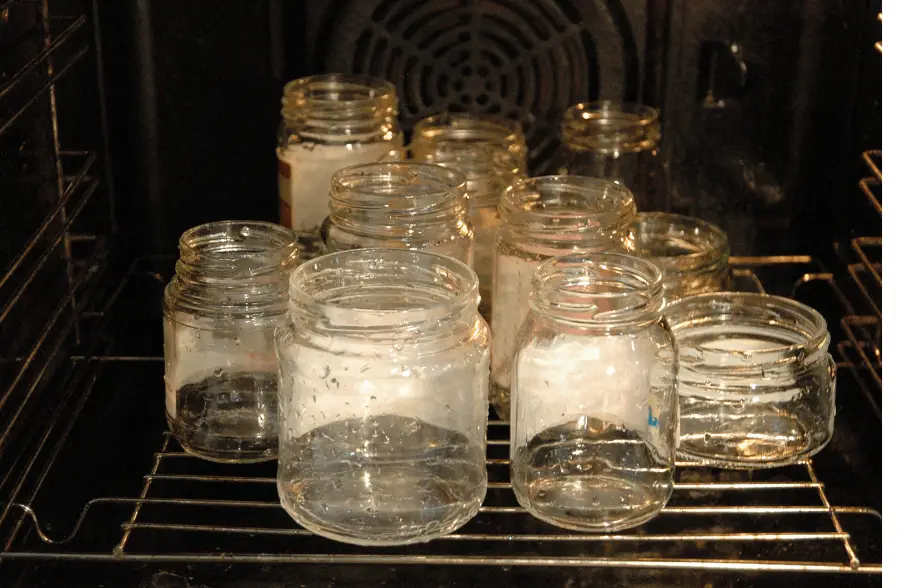
Yes, it’s definitely possible to bake gouache in the oven. The most common materials that need to be baked with paint on them are glass and ceramic. Baking gouache onto a surface is an easy way to adhere the paint to the surface if you don’t have any sealant handy.
I like to use gouache paint on Mason Jars, and then bake them in the oven. They come out super vibrant, and it’s also a great way to cure the paint.
If you’re painting on glass with gouache, you need to make sure the glass is oven safe before baking it. If the glass is not safe for oven use, it can shatter. This is definitely less than ideal, as it will make a large mess and ruin your hard work.
After you finish painting your glass, let the paint dry for about 12 hours, to ensure that all of the paint layers are dry. You will need to place your glass object in the oven before you turn it on, allowing the glass to gradually heat up to avoid breaking. This step is super important, or it will ruin your project.
Set the temperature of the oven to 350 degrees Fahrenheit. Once the oven has reached the proper temperature, allow the glass to bake for 30 minutes. Turn the oven back off, leaving the glass inside to cool down gradually.
After the process is complete, the paint is cured onto the glass. If necessary, you can wash the surface 72 hours after the baking is finished. The glass object will also be dishwasher safe, but it is recommended to still wash by hand with soapy water.
How to Seal Gouache Paint on Glass
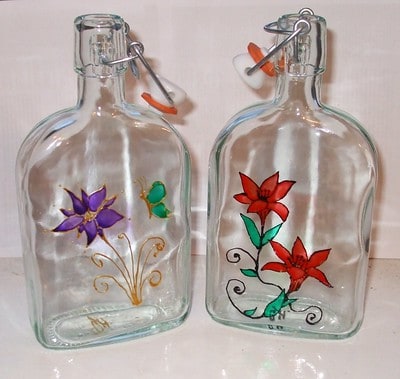
If you want to seal your gouache painting on glass with a sealant, you can with the right sealant. There is spray-on or brush-on sealant, both of which are fine to use based on your preference. The spray varnish is likely to dry faster than brush-on varnish, so keep that in mind.
For spray varnish, I like to use Mod Podge Sealant because it’s waterproof and super resistant. It’s one of the best sealers out there.

If you want to brush on your varnish, then I recommend Deco Art Varnish. It dries in a glossy finish, and can also be use for other types of paints such as acrylics.

No matter which sealant you choose, read the instructions thoroughly before starting. This will ensure that no mistakes are made in the process of sealing. If you are using a spray sealant, spray 12 inches away from the surface of the glass. Use back and forth motions, covering the entire surface evenly.
If you are using a brush-on sealant, you will need to paint as evenly as possible. Avoid going over the same spot more than once on your first layer, as this can impact the gouache paint. Let the first layer dry for about 15 minutes before adding additional layers.
It is recommended to use three layers of coating on the glass. This will give the best protection from any exposure to water. When the sealant is complete, let it dry for 24 hours before moving it or touching it. This will prevent the fingerprint indentations.
If you are painting a glass that will be used, you should use a waterproof sealant. This will add extra protection to the paint and work as a barrier to moisture.
Final Thoughts
If you want to paint a glass gift for a family member or a friend, you might be wondering what kind of paint you should use. Gouache paint is a great option because it is slightly translucent while keeping vibrant colors. It won’t stick well to the glass without a glass primer, so keep that in mind before starting your project.
Since gouache is water-based, it can be reactivated when exposed to water. If the paint gets wet after it has dried, it can ruin your hard work. To protect your gouache on the glass, you will want to seal the paint. You can do this by baking the glass or using the proper sealant.
Make sure to follow all my tips and recommended products, and your gouache paint should work amazing to your glass surface. Also, don’t forget to check out my other articles for all your painting Q&A’s. Happy painting!

